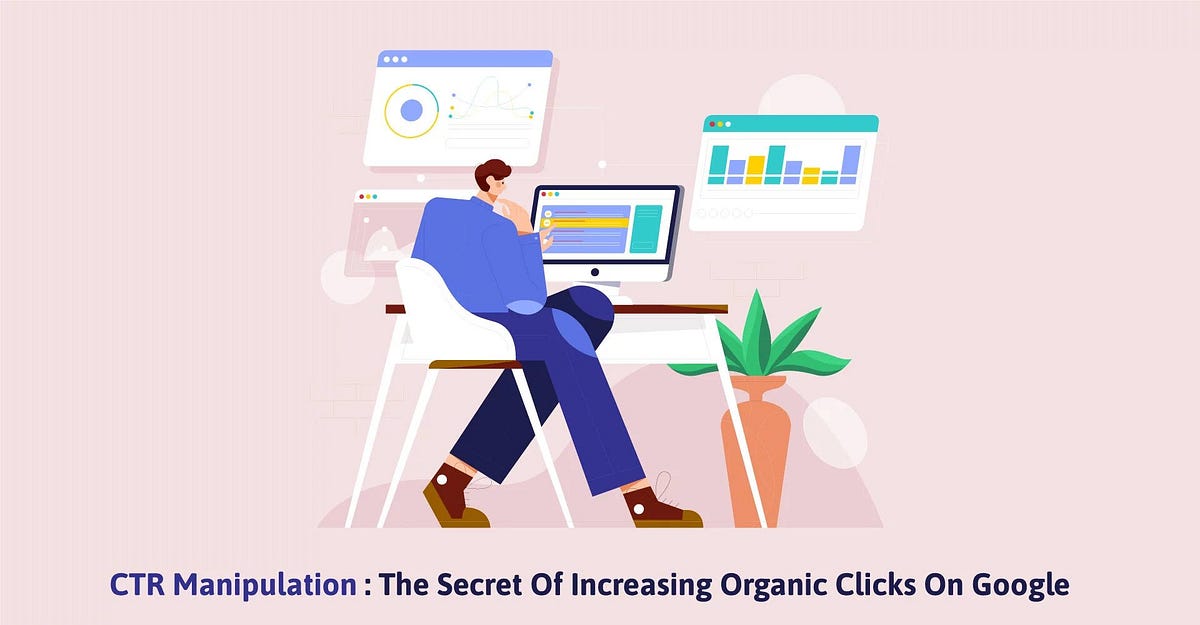CTR Manipulation Techniques: Proven Techniques for Higher Interaction
Wiki Article
Exploring the Partnership In Between CTR Adjustment Providers and Individual Behavior
In the realm of digital advertising, the influence of click-through rate (CTR) adjustment solutions on user behavior stays a complicated and fascinating subject. By studying the detailed partnership in between CTR control services and individual habits, intriguing understandings emerge that might improve our understanding of electronic advertising and marketing techniques and their impacts on customers.Influence of CTR Manipulation on Habits
Assessing the impact of Click-Through Rate (CTR) manipulation on user behavior exposes important understandings right into the characteristics of online engagement. CTR manipulation entails unnaturally pumping up the number of clicks on a certain link or advertisement to trick users and online search engine. This practice can result in an altered understanding of a web page's appeal or significance, eventually impacting user habits.
In addition, CTR control can alter the information made use of by algorithms to individualize customer experiences. This can cause customers being offered web content that does not align with their choices or interests, ultimately resulting in a decrease in customer satisfaction and engagement. Recognizing the effect of CTR adjustment on individual actions is essential for keeping openness and rely on on-line interactions.
Individual Interaction With Controlled CTR
Individual engagement with controlled CTR information usually leads to skewed perceptions of on the internet material popularity and relevance. When users communicate with content based upon synthetically filled with air Click-Through Rates (CTR), they might believe that particular information, items, or solutions are much more popular or trustworthy than they actually are. This can lead to individuals choosing based on deceptive data, leading to possibly unfavorable outcomes.Interaction metrics like likes, shares, comments, and time invested on a webpage are usually affected by CTR adjustment. Individuals may be a lot more likely to engage with web content that shows up to have greater involvement prices, additionally perpetuating the cycle of skewed assumptions. As a result, content developers and marketers might focus on creating web content that generates high CTR rather than focusing on producing genuinely useful and relevant product.

Psychological Effects of CTR Control

Furthermore, the psychological effects of CTR adjustment can likewise materialize in transformed decision-making procedures. Customers may be extra inclined to click on content entirely based upon its viewed popularity, instead than its actual value or importance to their demands. This behavior shift can lead to a shallow engagement with on the internet web content, where individuals may neglect high-grade yet less preferred offerings in favor ctr manipulation press release of those with artificially increased CTRs.
In essence, the psychological implications of CTR adjustment highlight the importance of preserving openness and authenticity in on-line interactions to cultivate real individual engagement and count on.
Honest Factors To Consider in CTR Control
CTR adjustment raises issues about deceiving users, distorting data analytics, and compromising the trustworthiness of on-line web content. By unnaturally blowing up CTR, individuals may be misguided right into clicking on links or advertisements they would not have actually selected otherwise, leading to a disingenuous online experience.Another moral facet to ponder is the fairness of adjusting CTR to acquire an unfair advantage over competitors. Taking part in such practices not just breaks concepts of fair game yet likewise undermines the count on that individuals place in online systems. It is important for businesses and digital marketing professionals to support moral standards in their techniques to guarantee openness, trustworthiness, and lasting sustainability in the on-line environment.
Effects for Digital Advertising And Marketing
With the boosting reliance on electronic systems for advertising objectives, the practice of manipulating click-through rates (CTR) poses substantial implications for the efficiency and honesty of digital advertising approaches. CTR adjustment can result in skewed data analytics, misguiding marketing experts into believing that their campaigns are performing far better than they in fact are. This can lead to misallocation of sources, with firms spending in underperforming approaches based upon falsified CTRs. When users realize that CTRs have been adjusted, it can deteriorate depend on in the brand, leading to long-term unfavorable consequences for client loyalty and brand online reputation.In addition, the usage of CTR adjustment services can produce an unjust affordable landscape, where companies that engage in such techniques get a synthetic advantage over those that stick to moral marketing criteria. This can suppress development and creative thinking in digital advertising, as success ends up being more concerning manipulation methods than providing real value to customers. Ultimately, the effects of CTR adjustment for electronic advertising and marketing expand beyond temporary gains, influencing the general sustainability and reputation of advertising and marketing efforts in the electronic world.
Final Thought
Finally, the partnership between CTR control solutions and customer habits is complicated and multifaceted. The impact of CTR control on actions, individual interaction with manipulated CTR, psychological effects, ethical factors to consider, and effects for digital marketing all contribute fit this partnership. Understanding these characteristics is critical for marketers and researchers alike in order to navigate the moral effects and take full advantage of the effectiveness of their digital marketing strategies.Report this wiki page